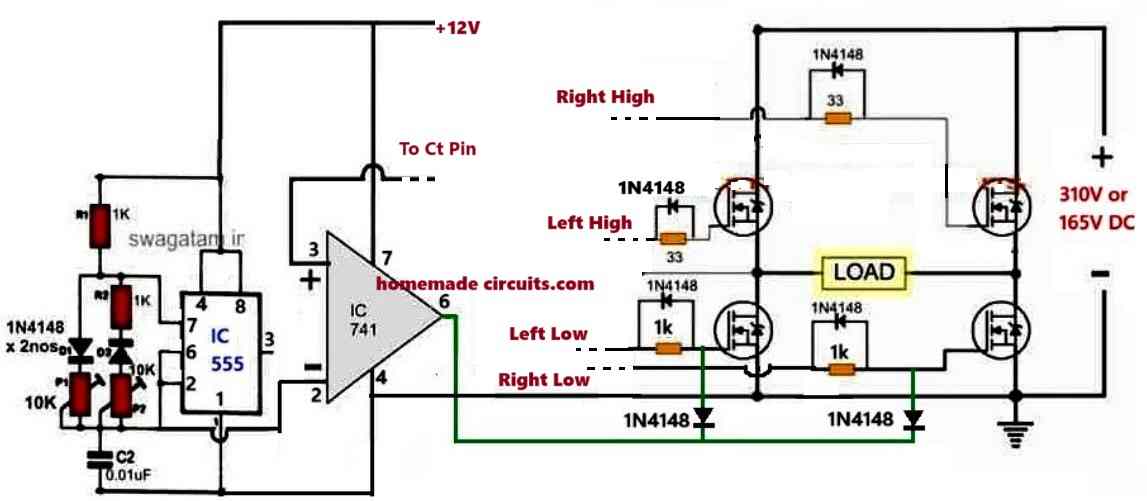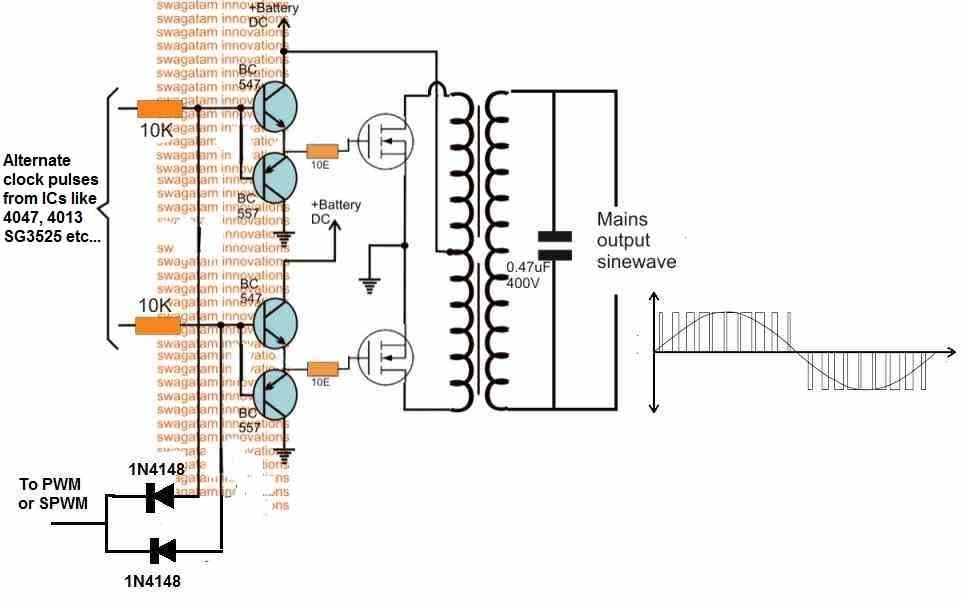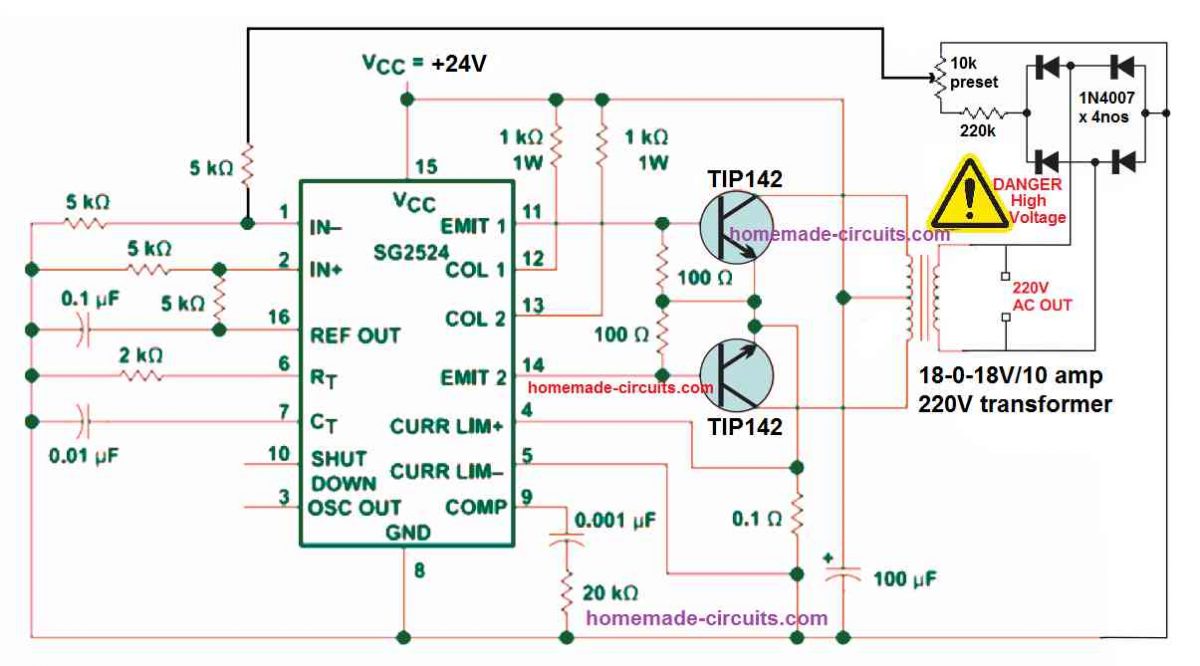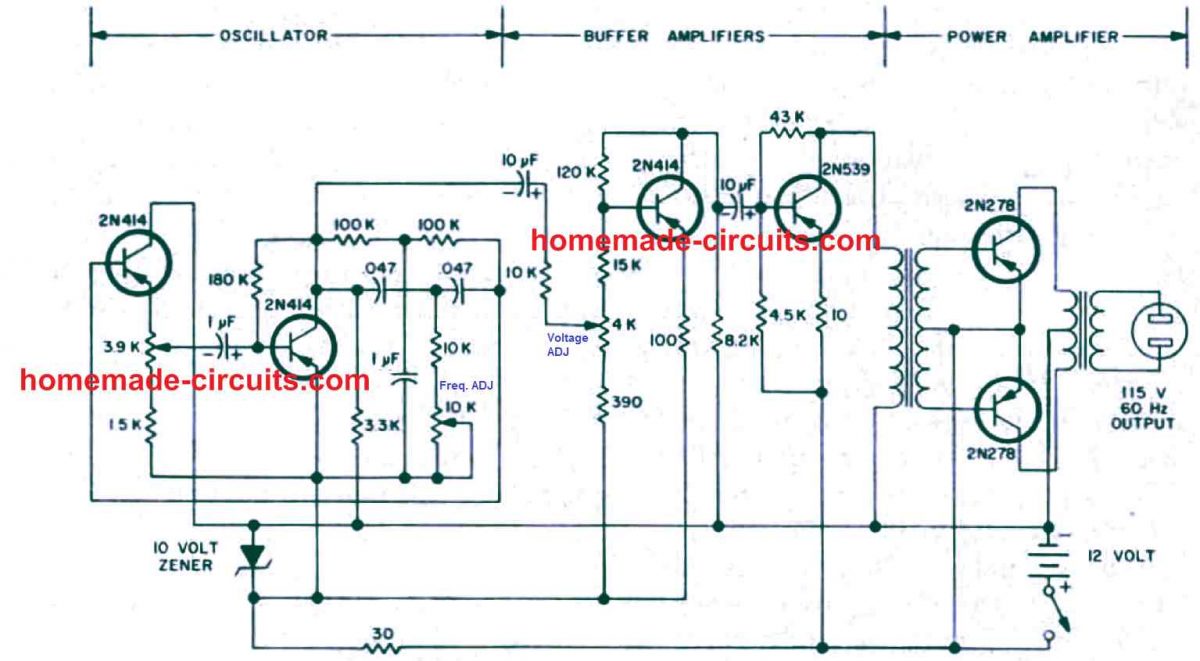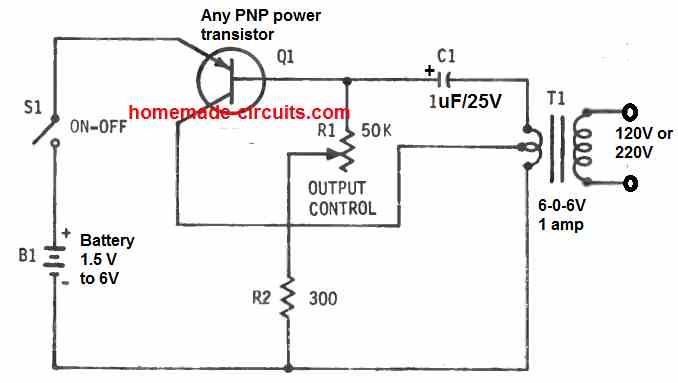In this post we’ll discuss how to convert any ordinary square wave H-bridge inverter into an almost pure sine wave inverter circuit. Basic Concept The idea is simple, just chop the low side MOSFET gates of the H-Bridge with reverse SPWM (Sinusoidal Pulse Width Modulation) waveform. This will force the low side 50 Hz, or […]
Inverter Circuits

Design your own Sine Wave Inverter Circuit from the Scratch [Tutorial]
In this article I have explained comprehensively regarding how to design a sine wave inverter without any form of coding or complex circuit designs. The included designs are simple yet extremely precise with their sine waveform structure. You might have often felt discouraged, thinking that making a sine wave inverter from the scratch can be […]
Different Types of UPS systems – Explained
In this post I am going to explain different types of uninterruptible power supply (UPS) that are available in the market and how they are classified according to the consumer’s requirement. We will also explore the different types of UPS’s block diagram to understand their technical difference between them. UPS systems are a type of […]
Inverter Circuit with Feedback Control
In this article I have explained a couple of inverter circuits featuring an automatic feedback control for ensuring that the output does not exceed the normal specified AC output level, and also does not exceed the specified overload conditions. What is Feedback Control in Inverters A feedback control in inverter is generally incorporated to control […]
250 Watt Pure Sine Wave Inverter Circuit
The cost and quantity of parts necessary to develop the proposed 250 watt sine wave power inverter circuit is actually much less compared to a noisy square wave switching-type inverter circuit. Only an extra three or four tiny transistors, a some resistors and capacitors, a couple of pots and a small driver transformer are all […]
1.5V, 3V, 6V Inverter Circuit Diagram
In this post I have explained a few miniature inverter circuits that can convert 1.5 V to 220 V or 3 V to 220 V or 6 V to 220 V. All the designs employ a single PNP transistor and transformer, connected in the feedback mode for generating the oscillations. 1.5 V to 220 V […]
